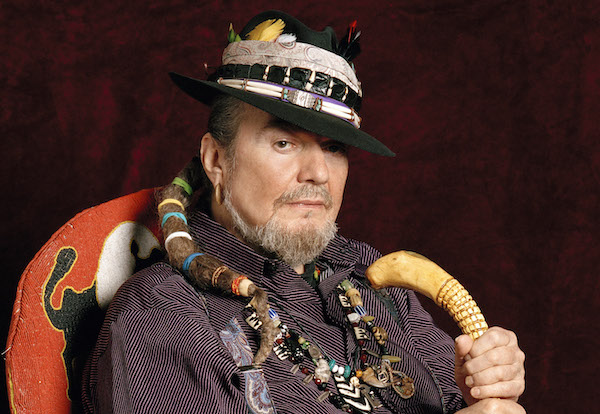Apr 2, 2024 12:59 PM
Saxophonist, Sonic Explorer Casey Benjamin Dies at 45
Casey Benjamin, the alto saxophonist, vocalist, keyboardist and producer who stamped his distinctive sounds on the…

Dr. John (1941–2019)
(Photo: Bruce Weber)That same year, Rebennack played piano and added backing vocals to The Rolling Stones’ Exile On Main Street, returning a favor from Mick Jagger, who had appeared on Dr. John’s ambitious 1971 release, The Sun, Moon & Herbs—initially intended as a triple-album but eventually reduced to a single LP.
Rebennack’s commercial breakthrough came with 1973’s In The Right Place. Produced by Toussaint and backed by The Meters, it included the funky hit single “Right Place, Wrong Time” and the whimsical “Such A Night,” a tune Rebennack played with The Band in Martin Scorsese’s 1978 documentary, The Last Waltz.
After moving to New York in 1980, he teamed with Brooklyn-born songwriter Doc Pomus to write songs for B.B. King’s 1981 album, There Must Be A Better World Somewhere, to which he contributed keyboards. Two solo piano albums during that period—1981’s Dr. John Plays Mac Rebennack and 1983’s The Brightest Smile In Town, both for the Baltimore-based Clean Cuts label—showcased his keyboard virtuosity (or his ability to “radiate the 88s,” as he would say in his distinctive raspy-throated growl).
Rebennack’s 1989 album for Warner Bros., In A Sentimental Mood, included a Grammy-winning duet with Rickie Lee Jones on “Makin’ Whoopee!,” while 1990’s Bluesiana Triangle (Windham Hill) was a summit meeting with saxophonist David “Fathead” Newman and drumming great Art Blakey, who sings on a couple of tracks.
His superb 1992 release, Goin’ Back To New Orleans (Warner Bros.), included songs by Jelly Roll Morton, Fats Domino and Huey “Piano” Smith, along with the traditional Mardi Gras Indians anthem “Indian Red” and a nod to New Orleans composer Louis Moreau Gottschalk on “Litanie Des Saints.”
Rebennack’s 2008 album, City That Care Forgot (429/Savoy), offered his gritty meditations on Hurricane Katrina and the official response to the disaster that wreaked havoc on his hometown. Around that time, he became a staunch advocate for preserving southern Louisiana’s wetlands.
His most recent studio release was the 2014 Louis Armstrong tribute Ske-Dat-De-Dat: The Spirit Of Satch on Concord. An avid student of music history, he previously had recorded tributes to Duke Ellington (2000’s Duke Elegant on Blue Note) and songwriter Johnny Mercer (2006’s Mercernary on Blue Note).
Among his accolades were six Grammy awards and induction into the Rock & Roll Hall of Fame in 2011. DB
(This article was updated July 2.)

Benjamin possessed a fluid, round sound on the alto saxophone, and he was often most recognizable by the layers of electronic effects that he put onto the instrument.
Apr 2, 2024 12:59 PM
Casey Benjamin, the alto saxophonist, vocalist, keyboardist and producer who stamped his distinctive sounds on the…

“He’s constructing intelligent musical sentences that connect seamlessly, which is the most important part of linear playing,” Charles McPherson said of alto saxophonist Sonny Red.
Feb 27, 2024 1:40 PM
“I might not have felt this way 30 to 40 years ago, but I’ve reached a point where I can hear value in what people…

Albert “Tootie” Heath (1935–2024) followed in the tradition of drummer Kenny Clarke, his idol.
Apr 5, 2024 10:28 AM
Albert “Tootie” Heath, a drummer of impeccable taste and time who was the youngest of three jazz-legend brothers…

“Both of us are quite grounded in the craft, the tradition and the harmonic sense,” Rosenwinkel said of his experience playing with Allen. “Yet I felt we shared something mystical as well.”
Mar 12, 2024 11:42 AM
“There are a few musicians you hear where, as somebody once said, the molecules in the room change. Geri was one of…

Henry Threadgill performs with Zooid at Big Ears in Knoxville, Tennessee.
Apr 9, 2024 11:30 AM
Big Ears, the annual four-day music celebration that first took place in 2009 in Knoxville, Tennessee, could well be…